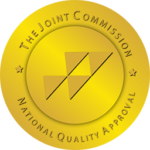- About Us
- Our Program
-
- Insurance
-
-
Insurance Information
- Aetna
- Ambetter
- Blue Cross Blue Shield
- Cigna
-
Insurance Verification
-
-
- For Professionals
- Blog
- Contact Us
Alcoholism, also known as alcohol use disorder (AUD), affects millions of people worldwide, but recognizing the need for help is the first critical step toward recovery. AUD can impact every aspect of life, from physical health to relationships and daily responsibilities. Fortunately, with the right support and treatment, long-term recovery is achievable. This guide explores how to identify the signs of alcoholism, the steps to seek professional help, and the various treatment options available. Whether you’re exploring treatment for yourself or a loved one, understanding the resources and strategies for managing AUD can pave the way for a healthier and more fulfilling life.
Key Takeaways
Recognizing the signs of alcohol use disorder (AUD) is crucial for initiating recovery and can significantly impact the healing process.
Seeking professional help from healthcare providers is essential for creating personalized treatment plans, with ongoing support being vital for long-term recovery.
Exploring a combination of behavioral therapies and medications, along with building a strong support system, is critical for managing AUD and preventing relapse.
What Are the Signs I Need Help for Alcoholism?

Signs you need help for alcoholism include drinking more than intended, inability to stop, and experiencing withdrawal symptoms like tremors, anxiety, or nausea. Neglecting responsibilities, losing interest in hobbies, and continuing to drink despite negative consequences are key indicators. Denial and isolation often accompany alcohol use disorder, making early intervention critical for recovery and long-term health.
Where Should I Start When Seeking Help for Alcoholism?
Begin seeking help for alcoholism by consulting a primary care physician. Doctors assess drinking patterns, overall health, and the severity of alcohol use disorder (AUD). They may refer individuals to mental health providers or addiction specialists for further evaluation. This collaboration results in a tailored treatment plan involving behavioral therapies, medication, and ongoing support. Recovery requires consistent effort, follow-ups, and engagement with resources like support groups. Taking the first step toward professional help initiates lasting recovery and improved well-being.
What Professional Treatment Options Are Available for Alcoholism?
Professional treatment of alcohol dependence involves behavioral therapies, medications, and integrated care. Cognitive-behavioral therapy (CBT) manages triggers, motivational enhancement therapy (MET) boosts motivation, and contingency management (CM) reinforces sobriety with rewards. Family counseling addresses relationship dynamics. Medications like Naltrexone curb cravings, Acamprosate balances brain chemistry, and Disulfiram deters drinking by causing adverse reactions to alcohol. Combining therapy with medication creates a comprehensive approach. Continuous support from providers, aftercare, and peer groups promotes long-term sobriety. Seeking treatment helps individuals overcome addiction and reclaim their health. Below, we discuss the key treatment provider options in detail.
What Behavioral Treatments Are Available for Alcoholism?
Behavioral treatments, such as counseling for alcohol addiction, are essential to alcohol use disorder (AUD) recovery, addressing psychological, emotional, and social factors. Cognitive-behavioral therapy (CBT) identifies triggers and builds coping skills, while motivational enhancement therapy (MET) strengthens readiness for change. Contingency management (CM) reinforces sobriety through rewards, and family counseling improves communication and support systems. These therapies empower individuals to modify drinking behaviors and sustain long-term recovery by fostering healthier coping mechanisms and reducing relapse risk.
Medications for Alcohol Use Disorder (AUD)
Medications play a crucial role in alcohol use disorder (AUD) treatment by addressing cravings, withdrawal symptoms, and alcohol’s reinforcing effects. Naltrexone blocks opioid receptors, reducing the pleasurable effects of alcohol and lowering relapse risk. Acamprosate stabilizes brain chemistry, alleviating emotional distress during abstinence. Disulfiram deters drinking by triggering unpleasant reactions when alcohol is consumed. These medications, combined with therapy, provide comprehensive support for sustained sobriety.
Why Choose True Self Recovery for Alcoholism Treatment?
When seeking professional treatment for alcohol use disorder (AUD), finding the right facility can make a significant difference in long-term success. True Self Recovery offers personalized, evidence-based treatment programs that address not only the physical aspects of addiction but also the emotional and psychological factors contributing to alcohol dependence. Their comprehensive services include medical detox, residential care, and outpatient programs, ensuring individuals receive continuous support at every stage of recovery.
True Self Recovery’s approach combines traditional therapies like cognitive-behavioral therapy (CBT) with holistic practices, family counseling, and wellness activities, fostering full-spectrum healing. With a dedicated team of professionals and a supportive community atmosphere, True Self Recovery empowers clients to take control of their lives and build a solid foundation for lasting sobriety.
How Can I Find Support Groups for Alcoholism?

Support groups play a crucial role in alcohol use disorder (AUD) recovery by fostering community, accountability, and shared experiences. Alcoholics Anonymous (AA) offers a 12-step program focused on peer support and spiritual growth, while Al-Anon provides guidance for family members affected by a loved one’s drinking. SMART Recovery uses cognitive-behavioral techniques to promote self-empowerment and practical coping strategies. Support groups reduce relapse risk, enhance resilience, and connect individuals with peers committed to sobriety.
How Do I Cope with Alcohol Withdrawal Symptoms?
Coping with alcohol withdrawal is a critical step in recovering from alcohol use disorder (AUD). Withdrawal symptoms range from mild anxiety and nausea to severe complications like seizures or delirium tremens (DTs). Medical supervision during detox ensures safety, with medications such as benzodiazepines and anticonvulsants used to manage symptoms. Detox plans tailored by healthcare professionals reduce discomfort and relapse risk. Ongoing therapy and support groups help manage psychological symptoms and sustain long-term sobriety.
What Can I Do to Prevent Relapse After Alcohol Use Disorder (AUD)?

Preventing relapse after alcohol use disorder (AUD) treatment involves recognizing triggers, developing coping skills, and building strong support networks. Stress, emotional distress, and social pressure are common relapse triggers. Strategies like removing alcohol from personal spaces, engaging in therapy, and attending support groups such as AA help maintain sobriety. Exercise, mindfulness, and planning for high-risk situations also reduce relapse risk. If relapse occurs, seeking immediate help reinforces recovery and prevents setbacks.
Seeking Help After a Relapse
Seeking support from a sponsor, therapist, or support group can help prevent prolonged relapse setbacks. Reflecting on triggers and revisiting coping mechanisms strengthens relapse prevention strategies. Revisiting treatment or adjusting recovery plans can provide renewed focus. Practicing self-compassion and maintaining a supportive environment reinforces long-term sobriety and personal growth.
How Important Is Aftercare in Alcohol Dependence Recovery?
Aftercare is essential for sustaining long-term recovery from alcohol dependence by reinforcing skills learned during treatment and providing ongoing support. It bridges the gap between formal programs and independent living, reducing relapse risk by addressing triggers, stress, and social pressures. Key aftercare components include outpatient therapy, support groups, sober living homes, and alumni programs. These services foster accountability, strengthen coping mechanisms, and promote emotional well-being, ensuring continuous progress in sobriety.
True Self Recovery’s Aftercare and Sober Living Programs
Maintaining sobriety after treatment requires ongoing care and a strong support network. True Self Recovery offers comprehensive aftercare services and sober living programs that provide structure and accountability as individuals transition to independent living. These programs include regular therapy, peer support groups, and relapse prevention planning, helping clients reinforce healthy habits and stay connected to the recovery community.
True Self Recovery’s sober living homes create a safe, substance-free environment where residents can continue their journey alongside others committed to sobriety. By combining life skills training, emotional support, and professional guidance, these programs significantly reduce the risk of relapse and promote long-term success in recovery.
What Resources Can Help Me Learn More About Alcoholism Treatment?

Accessing reliable resources is crucial for understanding alcohol use disorder (AUD) and treatment options. The National Institute on Alcohol Abuse and Alcoholism (NIAAA), SAMHSA, Alcoholics Anonymous (AA), and SMART Recovery provide evidence-based information, treatment locators, and peer support. Medical institutions like Mayo Clinic and Cleveland Clinic offer expert content on AUD symptoms and care. These resources empower individuals to make informed decisions, break stigma, and foster long-term recovery.
Bottom Line: How to Get Help For Alcoholism
Recognizing the problem of alcohol use disorder is the first crucial step toward recovery. By understanding the signs and symptoms, individuals and their loved ones can identify when it’s time to seek help. Early intervention can make a significant difference in the recovery process, offering a path to a healthier and more fulfilling life.
Exploring various treatment options, including behavioral treatments and medications, provides a comprehensive approach to managing and overcoming alcoholism. Building a strong support system and finding support groups like Alcoholics Anonymous can offer emotional encouragement and motivation, significantly decreasing the likelihood of relapse.
Aftercare and ongoing support are essential for maintaining long-term sobriety. By participating in alumni programs, outpatient therapy, and sober living arrangements, individuals can reinforce the benefits of initial treatment and reduce the risk of relapse. Remember, recovery is an ongoing process that requires dedication, support, and continuous effort. Take the first step today and embrace the journey towards a sober and fulfilling life.
FAQs about Getting Help for Alcoholism
How Do I Know If My Drinking Requires Professional Help?
If drinking negatively affects your health, relationships, or responsibilities, it may indicate alcohol use disorder (AUD). If you’ve tried to cut back but couldn’t, professional help may be necessary.
Can I Stop Drinking Without Professional Help?
Stopping without professional help can be risky, especially if withdrawal symptoms occur. Seeking medical guidance ensures a safer and more structured path to sobriety.
How Do I Choose Between Inpatient and Outpatient Treatment?
Inpatient treatment offers intensive care, while outpatient programs allow you to continue daily responsibilities. The severity of your condition helps determine the best option.
What Should I Expect During an Initial Consultation for Alcoholism Treatment?
During the consultation, healthcare providers assess your drinking patterns, health history, and personal goals to create a customized treatment plan.
How Can I Involve My Family in My Recovery Process?
Family involvement can strengthen recovery. Many treatment centers offer family counseling or education programs to support loved ones.
Are There Remote Options for Alcohol Addiction Treatment?
Yes, virtual counseling and telehealth services provide remote treatment options, allowing you to access professional help from home.
How Can I Stay Motivated During Recovery?
Staying connected with support groups, setting personal milestones, and engaging in therapy can help maintain motivation throughout your recovery.
What Should I Do If My Treatment Plan Isn’t Working?
If your current approach isn’t effective, communicate with your provider. Adjustments to medication, therapy, or treatment intensity can improve outcomes.
How Do I Manage Work or School While Seeking Treatment for Alcoholism?
Outpatient programs or evening therapy sessions can help balance treatment with daily responsibilities, allowing you to receive care without disruption.
Why Should I Consider True Self-Recovery for Alcoholism Treatment?
True Self Recovery offers personalized programs, including detox, outpatient care, and sober living. Their comprehensive, holistic approach supports long-term sobriety with expert guidance every step of the way.

 A healthcare professional discussing treatment options for alcohol dependence with a patient.
A healthcare professional discussing treatment options for alcohol dependence with a patient.
 A person writing in a drinking diary as part of their alcohol treatment plan. Lifestyle changes are essential for sustaining recovery from alcohol dependence. Establishing healthy routines, engaging in physical activity, and fostering supportive relationships help reduce triggers and improve emotional resilience. Tools like A-CHESS and CBT4CBT provide digital support for relapse prevention. By integrating mindfulness, balanced nutrition, and positive social networks, individuals build a stable foundation for long-term sobriety and personal growth.
A person writing in a drinking diary as part of their alcohol treatment plan. Lifestyle changes are essential for sustaining recovery from alcohol dependence. Establishing healthy routines, engaging in physical activity, and fostering supportive relationships help reduce triggers and improve emotional resilience. Tools like A-CHESS and CBT4CBT provide digital support for relapse prevention. By integrating mindfulness, balanced nutrition, and positive social networks, individuals build a stable foundation for long-term sobriety and personal growth.
